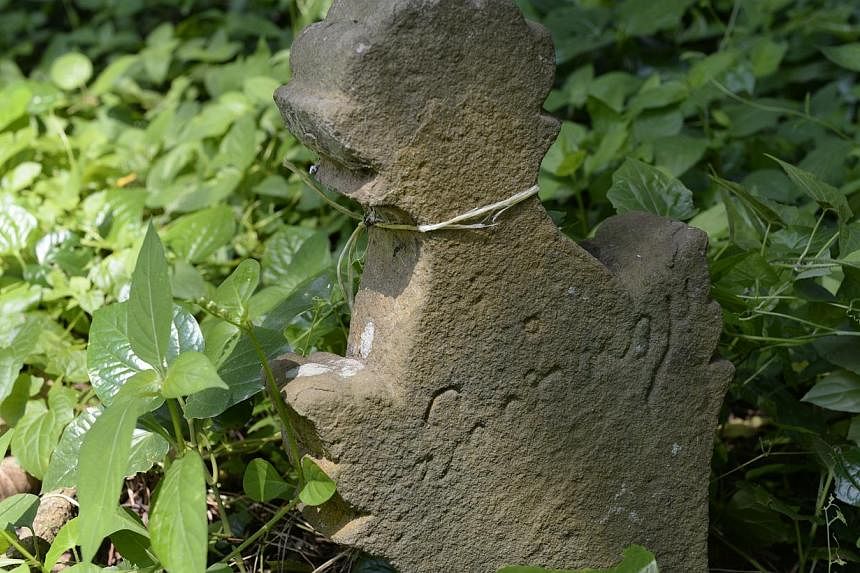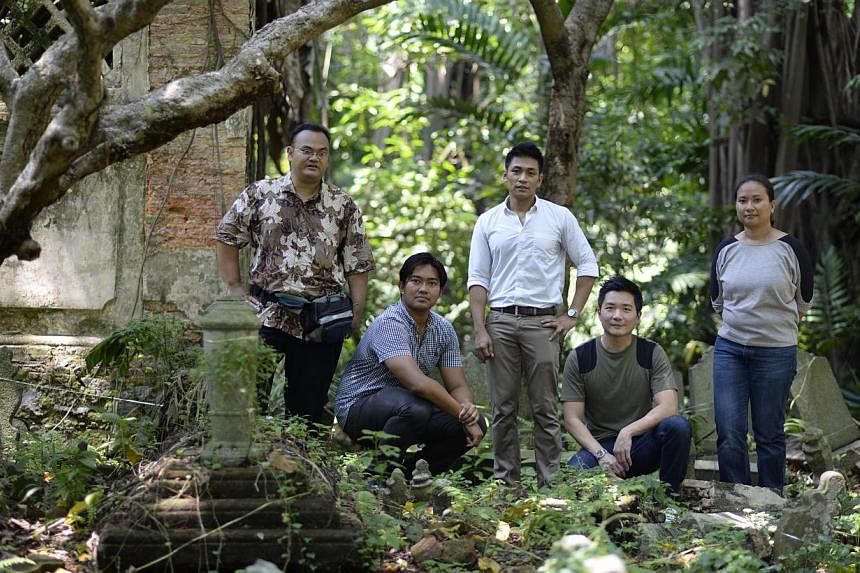Tucked in a corner off Victoria Street is a little known Muslim cemetery that houses the remains of royalty and luminaries from early Singapore.
Shrouded in heavy foliage and thick with weeds, it holds the secrets of a cosmopolitan Singapore in the 19th century, with tombstones bearing influences from not only nearby Java, but even the faraway Ottoman Empire.
The design of the gravestones reflects the "socio-cultural diversity of the early port town at Kampong Glam", said Dr Imran Tajudeen, an assistant professor at the National University of Singapore's architecture department who has been leading a team of 11 in a six-month study.
The prominent personalities at the 19th century Jalan Kubor - Singapore's oldest Muslim graveyard - include Tengku Abdul Kadir, the president of the Singapore Malay Union during the 1940s, local Justice of Peace Haji Ambok Sooloh Haji Omar and traders from Riau, Palembang and Pontianak.
Denizens of the 4,752 graves studied also include wealthy merchants from old port towns in the region.
The overseas influence is tied to Kampong Glam's past as a thriving port area which stretched from Beach Road to Kallang River and Rochor River.
Due to its proximity to royal territory, it was a popular choice for rich Malay merchants during the 1800s to early 1950s. "It was all part of a self-contained port town which included Sultan Mosque and Singapore's Istana or royal palace," Dr Imran said.
The cemetery was the focus of a study commissioned by the National Heritage Board (NHB) to help "uncover Singapore's connection to the Malay world", said the board's group director of policy, Mr Alvin Tan.
The research is timely because some of the weather-beaten tombstones' inscriptions had "faded over time". Heritage enthusiasts have also been fretting about the possibility of the site making way for new homes. It has been earmarked since 1998 for residential development.
Spending hours on site from December last year till May, Dr Imran and his team from Nusantara Consultancy marked out the graves into clusters to aid documentation. The cemetery comprises three main sections - the royal burial grounds, a plot initially intended for Indian Muslims which became a favoured plot for wealthy Bugis and Banjar merchants, and an area for Muslim burials managed by the Aljunied family.
With some help from alumni of the nearby Madrasah Aljunied, the researchers also studied the inscriptions on gravestones after shading them with chalk.
They found that the inscriptions had been written in multiple scripts such as Arabic, Malay, Javanese Aksara, Bugis Aksara, Gujarati, English and Chinese.
Said Mr Tan: "These findings point to the diversity of cultural groups that used to live in or operate from Kampong Glam and show how it was a cosmopolitan confluence of the region."
The information found will be available on the board's website, Walking Through Heritage, from today. Findings from the study will be incorporated as part of the Malay Heritage Centre's permanent galleries.
Dr Mohamed Effendy from NUS' department of South-east Asian studies, who was also part of the team, said Jalan Kubor's documentation leaves behind a repository of information for future generations. He said: "It is a treasure house of memories, where people can trace their lineages... It is important that the place is preserved. If you have no past, you have no future."



